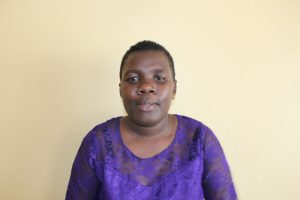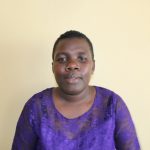May, 2024: Kapsoi Primary School Well Complete!
We are excited to share that Kapsoi Primary School in Kenya now has access to a new safe water source thanks to the completion of their borehole well! Students and staff are already using the well’s flowing water, which will provide them with a reliable water source for all of their daily needs.
We also installed new latrines and handwashing stations and trained students and staff on improved sanitation and hygiene practices. Together, these components will unlock the opportunity for these students to live better, healthier lives.

"This waterpoint is a big blessing to our community at large. The community members neighboring the school will be collecting water from this waterpoint. This will save them from walking long distances in search of clean drinking water. Secondly, at school, we will have enough time with our teachers in class, unlike previously when we used to waste [a] lot of lesson time going to fetch water. Finally, the school feeding program will be conducted [on] time, being that the school cook will no longer go in search of water before starting to cook," shared 13-year-old Gracious, chairperson of the Child Health Club.

Gracious getting a drink of clean water!
When asked how this waterpoint would impact her ability to learn, Gracious said, "Of course with enough time for lessons and revision, I will be able to perform excellently in my studies and work towards my future career. Reliable water at school will not only have [an] impact [on] my learning, but also in my presentation. I will always be clean and smartly dressed [and] the school will be clean, courtesy of the waterpoint making the environment conducive for learning."
Teachers were just as excited as the students about the new well on campus. Headteacher Caroline Kadenge, was excited to share how the problems they faced as a school will be a thing of the past with this new waterpoint, changing their futures.
"As a school, we have suffered for [a] long [time], and having this waterpoint here is a blessing. First, our pupils will have sufficient water for drinking and cleaning. We have been going to the spring down the road, which is far and time-consuming, but now pupils will no longer be seen on the road with jerrycans searching for water. Instead, we will use that time to concentrate on school programs," Caroline shared.

Caroline and her students.
"Water is life and the future of this nation lies with our children. Having clean, reliable, and safe water around [us] is peace, and our children will be mentally stable. This will make them concentrate on their studies, hence becoming better people in [the] future and building the nation," she continued.
When we asked Caroline what plans they had for school development, she shared a goal that is crucial to her student's development. "We have been trying to plant trees for shade, but [they] end up drying [out] due to lack of water. So now with water around, it will help in watering the trees. [In] the end, we will have [a] very nice and adorable playing ground."
How We Got the Water Flowing
Parents, staff, and students all contributed to this well’s success. After determining the best site for the well through a hydrogeological survey, we obtained approval and a license from the government to begin drilling.
To prepare, the school collected fine sand and water for cement-making. When everything was ready, our drill team and staff arrived at the school to begin work.

Drilling begins!
Drilling commenced with excitement in the air. The team drove down a temporary casing to keep the walls from collapsing as the rig progressed. We continued drilling to reach a final depth of 100 meters with a final static water level of 20 meters.
The drilling process can take up to three consecutive days to complete due to this region’s hard bedrock, so the drill team set up a camp where they could rest and refuel. The school’s kitchen staff and parents helped provide meals for the team, while the school provided a safe place for the artisans’ accommodations and materials.
Once we reached the required depth, the team replaced the temporary casing with a permanent version and then bailed out the dirty water at the bottom of the well. The workers installed pipes, flushed them, tested the well’s yield, and chlorinated the water.

Preparing to change to the permanent casing.
After water treatment, we constructed a cement well pad to seal off the well from any ground-level contaminants. Tiles are installed beneath the spout to protect the cement from the erosive force of the water.

Constructing the well pad.
We also included a short drainage channel to carry spilled water away from the pump and prevent standing water. A soak pit absorbs runoff at the end of the drainage channel, further eliminating any stagnant water.
When the well pad was dry, we installed a new stainless steel AfriDev handpump and sampled the water for a quality test. The results showed this water was safe for drinking!

We officially handed over the new borehole to the school’s students and teachers.
VIP Latrines

This project funded the installation of six new ventilated improved pit (VIP) latrines. These new latrines have cement floors designed to be easy to use and clean, locking doors for safety and privacy, and vents to keep air flowing up and out through the roof. With a well right on school property, there should be enough water to keep them clean.
Handwashing Stations

We set up two handwashing stations outside the latrines and handed them over to the newly formed student health club. Health club members will teach other students how to wash their hands at the stations properly, fill the stations with water, and ensure that there is always a cleaning agent available.
New Knowledge
We scheduled hygiene and sanitation training with the school’s staff, who ensured that the training date would be convenient for pupils and teachers. When the training day arrived, facilitators Stella Inganji and Betty Muhongo deployed to the site to lead the event. 22 students and teachers attended the training. Stella was touched by the number of students who attended the training, as it was exams week for the students. Kapsoi Primary School chose to prioritize hygiene and sanitation training, which showed how much they value this new water project.

Training session.
We focused on personal, menstrual, oral, and environmental hygiene; proper water handling; soap-making and the ten steps of handwashing; the importance of primary health care, the prevention of teen pregnancy and COVID-19; child rights; the operation and maintenance of the pump, well, latrines, and handwashing stations; and leadership and governance. During the latter, the students elected their peers to lead their newly formed student health club.
The student health club members will encourage good health and hygiene practices amongst their peers, teachers, and the larger community. By the end of the training, each pupil understood their role in sustaining clean water and good health within their school community.
"Soap making was the topic that prompted [the] most interest from the participants. None of them had any idea how liquid soap is made. [The] majority of them thought it could only be done by big machines and they thought it is not a process that can be taught. This made them interested to know the process by participating in making the soap while opening interactive discussions through the help of the trainer on [the] effects, use, and benefits of making soap at home," shared Stella.

Oral hygiene training.
We asked Gracious what her favorite lesson was during the training sessions, and she said, "What stood [out] so highly on my side, was environmental hygiene, and to be specific it was environmental conservation. As a school, we have been trying to conserve our environment and because I'm in love with a good and organized environment, this training will surely help a lot, especially on the kind of water-friendly trees we need to plant."

Environmental hygiene training.
Gracious continued, "I have come to realize that back at home in the community, good hygiene practices are poorly maintained and ignored by many. For instance, handwashing; most community members don't use soap while washing their hands and this is not good. This is just one practice that people do wrong but we have several, like not brushing teeth daily, [and] planting unfriendly trees, among so many bad practices. So there is [a] need and [an] urge for community members to be constantly reminded [of] proper hygiene practices."
Conclusion
This project required a substantial collaboration between our staff, our in-country teams, and the community members. When an issue arises concerning the well, the students and teachers are equipped with the necessary skills to rectify the problem and ensure the water point works appropriately. However, if the issue is beyond their capabilities, they can contact their local field officers to assist them.
Also, we will continue to offer them unmatchable support as a part of our monitoring and maintenance program. We walk with each community, problem-solving together when they face challenges with functionality, seasonality, or water quality. Together, all these components help us strive for enduring access to reliable, clean, and safe water for this community.
With your contribution, one more piece has been added to a large puzzle of water projects. In Kenya, Uganda, and Sierra Leone, we’re working toward complete coverage. That means reliable, maintained water sources within a 30-minute round trip for each community, household, school, and health center. With this in mind, search through our upcoming projects to see which community you can help next!
Thank you for making all of this possible!









 Borehole Well and Hand Pump
Borehole Well and Hand Pump
 Rehabilitation Project
Rehabilitation Project


































